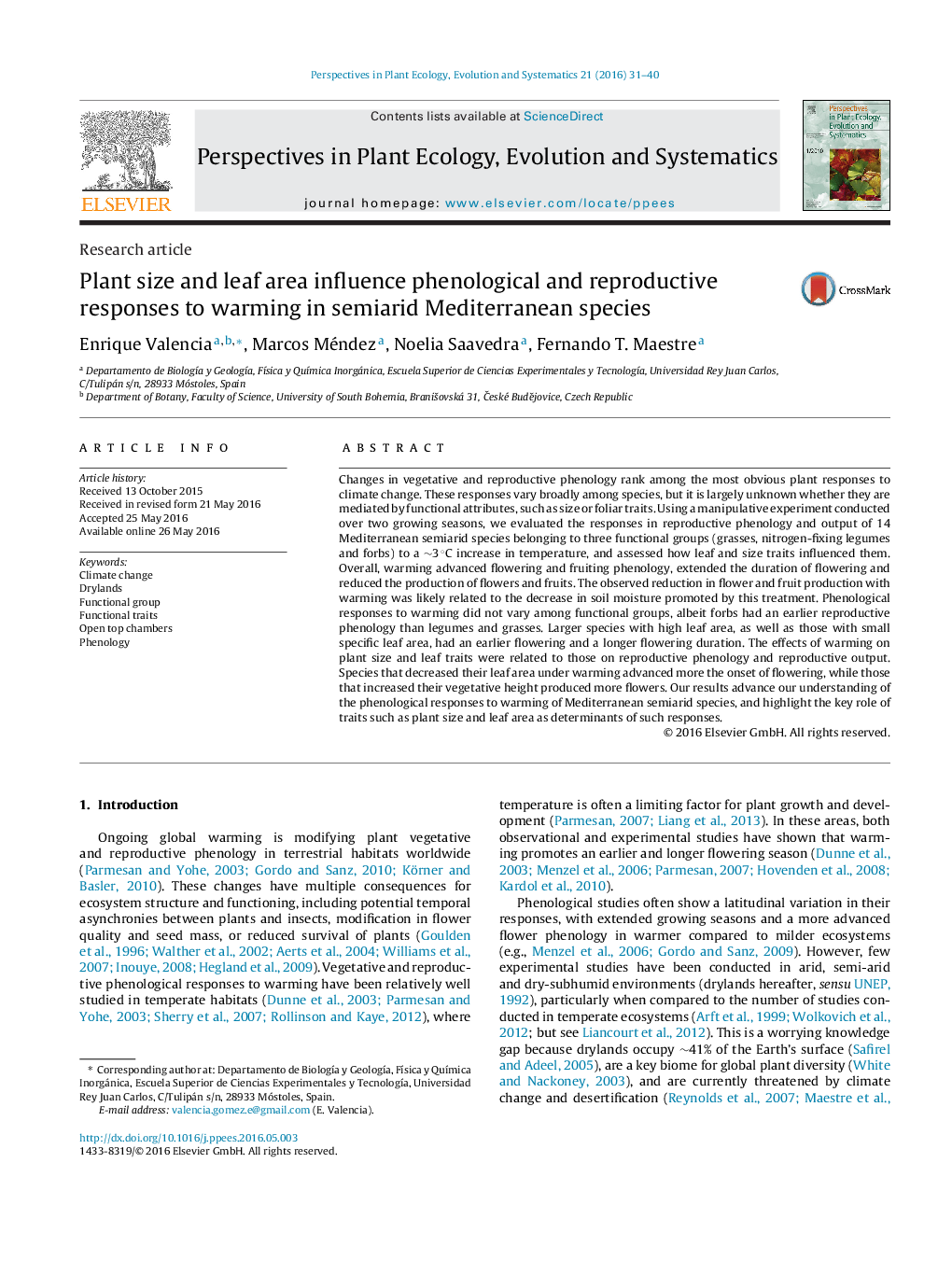| Article ID | Journal | Published Year | Pages | File Type |
|---|---|---|---|---|
| 4400904 | Perspectives in Plant Ecology, Evolution and Systematics | 2016 | 10 Pages |
•Warming advanced flowering and fruiting phenology, and extended flowering duration.•The onset of flowering was the variable most affected by warming.•Warming reduced flower and fruit production.•Functional groups did not affect observed responses to warming.•Plant size and leaf area modulated phenological and reproductive responses to warming.
Changes in vegetative and reproductive phenology rank among the most obvious plant responses to climate change. These responses vary broadly among species, but it is largely unknown whether they are mediated by functional attributes, such as size or foliar traits. Using a manipulative experiment conducted over two growing seasons, we evaluated the responses in reproductive phenology and output of 14 Mediterranean semiarid species belonging to three functional groups (grasses, nitrogen-fixing legumes and forbs) to a ∼3 °C increase in temperature, and assessed how leaf and size traits influenced them. Overall, warming advanced flowering and fruiting phenology, extended the duration of flowering and reduced the production of flowers and fruits. The observed reduction in flower and fruit production with warming was likely related to the decrease in soil moisture promoted by this treatment. Phenological responses to warming did not vary among functional groups, albeit forbs had an earlier reproductive phenology than legumes and grasses. Larger species with high leaf area, as well as those with small specific leaf area, had an earlier flowering and a longer flowering duration. The effects of warming on plant size and leaf traits were related to those on reproductive phenology and reproductive output. Species that decreased their leaf area under warming advanced more the onset of flowering, while those that increased their vegetative height produced more flowers. Our results advance our understanding of the phenological responses to warming of Mediterranean semiarid species, and highlight the key role of traits such as plant size and leaf area as determinants of such responses.
